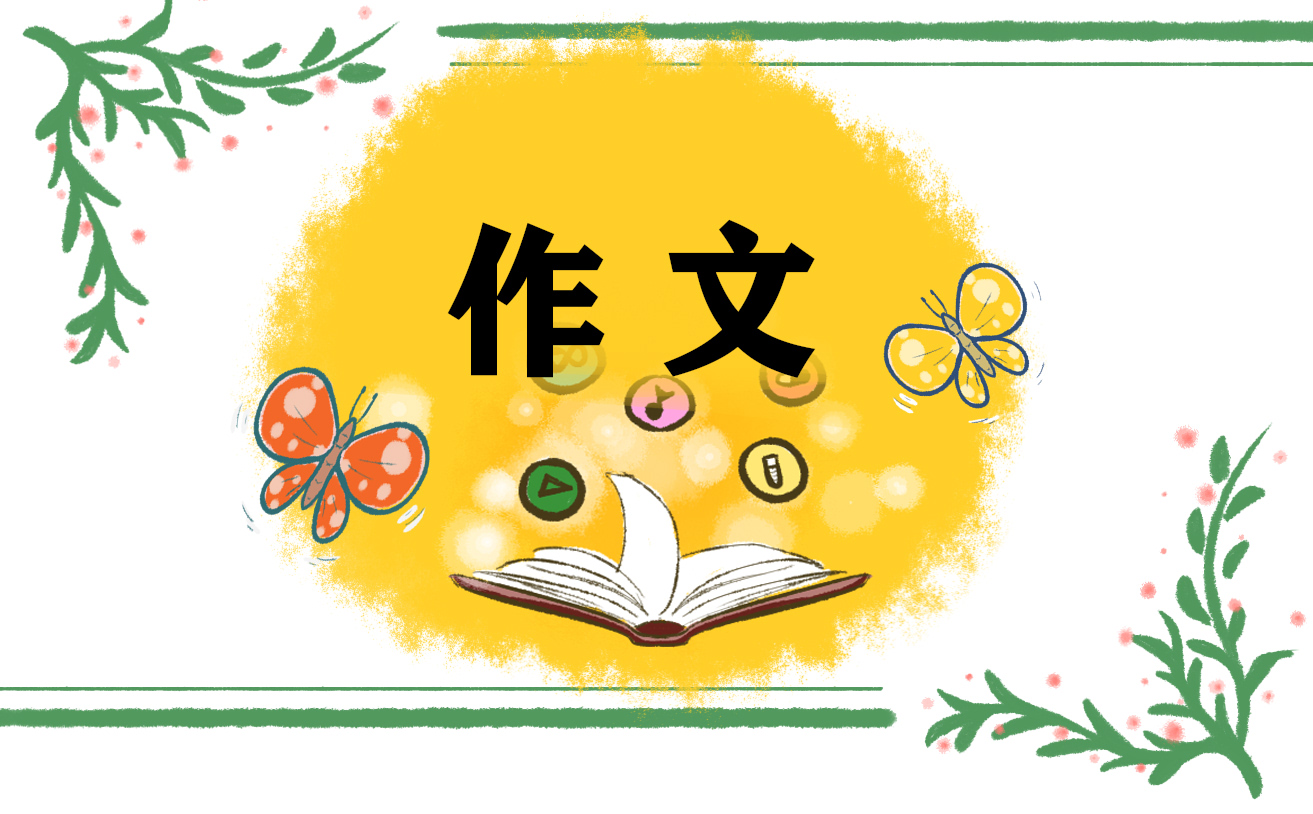人教版五年级上册英语知识点
时间:2021-07-02 20:33:57
五年级英语学习对学生的要求不多,主要是掌握每单元要求的词汇和句型,学会一定的阅读技巧,并能初步用英语写作文。下面就是小编给大家带来的人教版五年级上册英语知识点,希望能帮助到大家!
人教版五年级上册英语知识点
人教版五年级上册英语知识点Unit 1
一. 单词:
young年轻的 funny滑稽可笑的 tall高的 strong强壮的
kind和蔼的,亲切的old年老的 short矮的 thin瘦的
who’s = who is Mr先生 like像、喜欢 what’s = what is
he’s = he is principal校长 university student大学生
strict 严格的 smart聪明的、巧妙的 active积极的、活跃的
very 很、非常 but但是 quiet安静的;文静的
she’s = she is
二. 句子:
1.A:Who’s your English teacher ? 你的英语老师是谁?
B:Mr Carter. 卡特先生.
2. He’s from Canada. 他来自加拿大。
3. A:What’s he like ? 他什么样?
B: He’s tall and strong . 他又高又壮。
He’s very funny. 他很滑稽。
(Who,What引导的特殊疑问句,用来对不熟悉的老师进行问答:Who's + 某人?What's he / she like? He / She is + 与身体特征和性格特征有关的形容词。)
4.A: Who’s that young lady/? 那个年轻的女士是谁?
B:She’s our principal. 她是我们的校长。
5.I have a new math teacher. 我有一位新数学老师。
6.Her class is so much fun. 她的课非常有趣。
7.She’s a university student. 她是一名大学生。
8. A: Is she quiet ? 她很安静吗?
B: No, she isn’t. She’s very active. 不是的。她很活跃的。
( Is引导的一般疑问句,谈论某位老师是否具有某方面的特征:Is he / she + 与身体特征和性格特征有关的形容词,回答用:Yes, he / she is. No, he / she isn't. )
9. A:Is she strict ? 她很严格么?
B:Yes, she is , but she’s very kind . 是的,但她很和蔼的。
三. 语法:
1、动词的第三人称单数:(当一个句子中的人物是第三人称单数,并且这个句子又是一般现在时态时,该句子中的动词要使用第三人称单数形式。)
have—has like—likes do—does go—goes watch--watches
2、词语变化:fun(形容词形式)――funny funny(名词形式)――fun
know(同音词)――no
反义词:tall—short long—short young—old strong—thin
active—quiet kind—strict active—quiet
3、be like与do like: 在本单元中,What’s …like?的句型是主句型,这里的like是“像…一样”的意思. What’s …like?是问某某长得什么样子。它的答语一般用:He/She/ It is…(后面跟描写人的外貌特征的词语),如:What’s your father like?你爸爸长得什么样子?。而在do like的句子中,like的意思才是“喜欢”的意思。如:What does your father like? 你爸爸喜欢什么?
4 Mr—先生 Miss —小姐(未婚) Mrs—夫人,女士(已婚)
四.语音:
字母组合:ea peach tea seat jeans
字母组合:ee beef sheep queen sleep
人教版五年级上册英语知识点Unit 2
一.单词:
Monday (Mon.)星期一 Tuesday (Tue.) 星期二 Wednesday(Wed.) 星期三 Thursday (Thu.) 星期四 Friday (Fri.) 星期五 day天;日子
have有;吃 on 在……时候 do homework做作业
watch TV 看电视 read books读书 Saturday (Sat.)星期六 Sunday (Sun.)星期日 What about…? ……怎么样? too也;太
二.句子:
1 A: What day is it today ? 今天星期几?
B: It’s Wednesday. 星期三。
2. A: What do you have on Thursdays ? 星期四你们有什么课?
B: We have English,math and science on Thursdays.
在星期四我们有英语,数学和科学课。
3. I like Thursdays. 我喜欢星期四。
4.A: What do you do on Saturdays ? 星期六你常常做什么?
B: I often do homework,read books and watch TV.
我经常做作业,读书,看电视。
5. A: What about you ? /And you? 你怎么样?/你呢?
B: I do my homework, too. 我也做作业。
三. 语法:
1、当介词in, on ,at 后面跟表示时间的词语时,表示在某年或某月(当只有年和月的时候),用in.如 in May在五月。In 1988,在1988年。表示在某段时间,如在上午,下午,晚上也用in.如in the morning, in the afternoon, in the evening. 表示在某日,在星期几时,用on。如on Monday, on Sunday . 表示在几点几分,在具体时间时,用at. 如at 6:30, at 9 o’clock.
2. I like Mondays. John likes Sundays. 这里的likes是like的第三人称单数形式,在一般现在时的句子中,如果主语是第三人称单数,注意动词要变成三单形式。
3、理解、区分这两个句型
A: What do you have on Mondays? (每逢周一你们都有什么课?)
B: We have Chinese, English, math and science on Mondays.
A: What do you do on Mondays? (每逢周一你都做什么?)
B: I often do homework, read books and watch TV.
四.语音:
字母组合:ow how town brown now
字母组合:ou our mouth mountain house
人教版五年级上册英语知识点Unit 3
一.单词:
cabbage洋白菜;卷心菜pork 猪肉 mutton羊肉 eggplant茄子
fish 鱼 green beans青豆 tofu 豆腐 potato土豆
tomato西红柿 for为;给 lunch中餐 we我们
healthy健康的;有益健康的tasty好吃的 sweet甜的 sour酸的
fresh新鲜的 salty 咸的 favourite最喜欢的
they’re = they are fruit水果 grape葡萄
don’t = do not 不;非第三人称单数的否定形式
二.句子:
1.A: What would you like for lunch? 午饭你想吃什么?
B: I’d like some tomatoes and mutton.我想吃西红柿和羊肉。
2. A: What do you have for lunch on Mondays?星期一你们午饭吃什么?
B: We have tomatoes,tofu and fish。我们吃西红柿,豆腐和鱼。
3.A: What’s your favourite food? 你最喜欢的食物是什么?
B: Fish. 鱼。
4.A: What’s your favourite fruit ? 你最喜欢的水果是什么?
B: I like apples . They are sweet. 我喜欢苹果. 它们是甜的.
I like fruits. But I don’t like grapes. They’re sour.
我喜欢水果. 但是我不喜欢葡萄. 它们是酸的。
三. 语法:
1、I have eggplant and tomatoes for lunch. 我午饭吃茄子和西红柿。
这里的eggplant是指一道菜,是被切碎了的,熟的,所以这里的eggplant是不可数名词,不能用复数形式。
西红柿 tomato 和土豆 potato 复数形式在后面加es tomatoes, potatoes
fish 当表示为活的鱼的时候,是可数的,但它是单复数同形;当表示为鱼肉的时候,是不可数的。
cabbage 当表示是一种包菜的数量时,是不可数名词,表示为cabbage;当表示不同种类的包菜时,是可数名词,表示为cabbages
eggplant 当表示是未经过烹饪的蔬菜时,是可数名词,表示为eggplants;当表示经烹饪过的菜肴时,是不可数名词,表示为eggplant
常见的肉类为不可数名词,pork mutton beef等
2. 下列单词的形容词形式:
health---healthy(健康的) taste---tasty(好吃的)
3.What’ s your favorite food? 后面一般都跟集合的名词:food 食物 fruit水果 drink饮料 colour颜色 class 课程 book 书 sport 运动 vegetable 蔬菜 number数字 day天
四.语音:
字母组合:ow window yellow snow grow
字母组合:oa coat boat goat road
——针对练习
根据句意,写出所缺的单词(第一个字母已给出)。
1.Sugar is s___________.
2.Apple and grape are fresh and h___________.
3.Salt is s___________.
4.Grape is s___________,I don’t like it.
人教版五年级上册英语知识点Unit 4
一. 单词:
empty the trash倒垃圾 cook the meals 做饭 water the flowers浇花 sweep the floor扫地 clean the bedroom打扫卧室 make the bed铺床 set the table摆餐具 wash the clothes洗衣服 do the dishes洗碗碟 put away the clothes收拾衣服can’t = cannot(不会;不能)
use a computer(使用计算机)
二. 句子:
1. I’m helpful! I can sweep the floor。我是有用的! 我能扫地。
2. A:Are you helpful at home?你在家有用吗?
B: Sure. 当然。
3. A: What can you do ? 你会干什么?
B: I can sweep the floor.我会扫地。
4. A: Can you do housework? 你能会家务吗?
B: Yes I can.是的,我会 No, I can't.不,我不会.
5. A: Can you wash the clothes?你会洗衣服吗?
B: No, I can't, but I'd like to have a try. 不,我不会,但我想试一试。
6. A: Can you make the bed ? 你会铺床吗?
B: No,I can’t. 不,我不会。
7. A: Can you use a computer ? 你会使用计算机吗?
B: Yes, I can. 是的,我会.
三. 语法:
1、当你想询问别人会干什么时,用What can you do? 答句有肯定形式:Yes, I can . 否定形式:No, I can’t。
当你想知道他人会干什么时,可用What can he do ? 或者What can she do ? 答句有肯定形式:Yes, he can ./ Yes, she can. 否定形式:No, he can’t./No, she can’t。
2、I can …变为一般疑问句:Can you …? He can…或She can …变为一般疑问句:Can he …/ Can she …? 其中的he , she 也可以变为其他具体的人物。如 My mother can cook the meals. 变为一般疑问句:Can your mother cook the meals?
3、help (形容词形式)――helpful helpful (动词形式)――help
4、当句子中出现了情态动词can或其否定形式can’t时,其他的动词要用原形。
四.语音:
or short fork horse storm
all tall small ball hall
人教版五年级上册英语知识点Unit 5
一.单词:
air-conditioner空调 curtain窗帘 trash bin垃圾箱 closet壁橱;衣橱
mirror 镜子 end table床头柜 bedroom卧室 kitchen厨房
bathroom卫生间 living room客厅;起居室 in在…里面
on在…上面接 under在…下面 near在..旁边 behind在…后边
over在……上方 in front of在……前面 clothes 衣服
二.句子:
1.A: Is this your bedroom? 这是你的卧室吗?
B: Yes, it is. 是的,它是。
2.I have my own room now.现在我有自己的房间了。
3.A:What’s it like? 它什么样?
B:There is a mirror, a bed and a big closet.
这里有一面镜子,一张床和一个大衣橱。
(There be句型,某地有某物:There is / are + 家具 )
4.There are two bedrooms, a kitchen,a bathroom and a living room.
这里有两间卧室,一间厨房,一间卫生间和一间客厅.
5.A: Where is the trash bin? 垃圾箱在哪?
B:It's near the table. 它在桌子旁边。
6.There are two end tables near the bed. 床边有两个床头柜。
7. The closet is near the table.衣橱在桌子旁边。
8. Many clothes are in the closet. 许多衣服在衣橱里。
9. The trash bin is behind the door. 垃圾箱在门后。
三.语法:
1、There be 句型包括单数形式的There is a/an …句型和复数形式的there are …句型。There is a/an …句型表示有一个,后面跟名词单数。There are …句型表示有多个,后面一般接具体数字或some , many,再后面跟名词复数。
There be 句型又叫“存在”句型,它一般表示在某地有某物。
2、There be 句型中使用单数句式还是复数句式遵循就近原则。
3、on 与over的区别:on在…上面。表示与下面的物体互相接触,紧挨着。
over在…上面,表示与下面的物体不接触,两个物体之间有一定的距离。
四.语音:
ir skirt shirt girl birthday
ur nurse purple hamburger fur
人教版五年级上册英语知识点Unit 6
一.单词:
sky天空 cloud云 mountain 山;山脉 river河流
flower花 grass草 lake湖泊 forest森林
path 路;小道 park公园 picture照片 village乡村;村庄
city 城市 house房子 bridge桥 tree树
road公路 building建筑物 clean干净的
二.句子:
1.There is a forest in the nature park.在自然公园里有一个森林。
2.A: Is there a forest in the park? 公园里面有一个森林吗?
B: Yes, there is. 是的,有。
(There be句型的一般疑问句:--- Is / Are there + 某物 + 某地?回答:Yes, there is / are. No, there isn't / aren't. )
3.A: Is there a river? 有一条河吗?
B: No, there isn’t。不,没有。
4.There are many small houses in my village.
在我的村庄里有许多小房子。
5.A:Are there any pandas in the mountains? 山里有熊猫吗?
B: No,there aren’t. 不,没有。 6.A: Are there any fish in the river? 河里有鱼吗?
B : Yes, there are. 是的,有。
三. 语法:
1、There be 的单数形式在变为一般疑问句时,将助动词be提前,与there交换位置,如句中有第一人称代词,变为第二人称,将句末的句号变为问号,其他不变。
There be 的复数形式在变为一般疑问句时,将助动词be提前,与there交换位置,然后将句中some或many变为any, 如句中有第一人称代词,变为第二人称,再将句末的句号变为问号,其他不变。
2、There be 句型表示“有”和have, has表示“有”的区别
There be句型表示“有”的意思,表示在某个地方有什么,它表示的一种存在。如:There is a bag on the desk. 有一个书包在课桌上。
There are many books on the desk. 有许多书在课桌上。
Have, has 表示“有”的意思,表示一种占有,拥有的关系,一般表示某人有某物。当主语人称是第三人称单数时用has, 其他时候用have。如:I have a new pen. 我有一支新钢笔。
He has a big schoolbag. 他有一个大书包。
3.人称代词和物主代词
人称代词(表格略)
四.语音:
er teacher river farmer dinner
or doctor actor visitor author
人教版五年级上册英语知识点相关文章:
[人教版五年级上册英语知识点]相关的文章- 上一篇:六年级上册语文《三黑和土地》知识点
- 下一篇:互帮互助的作文六年级







